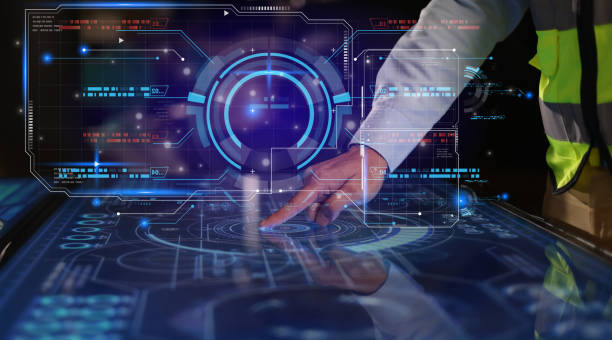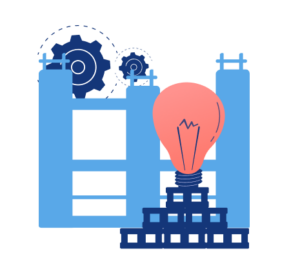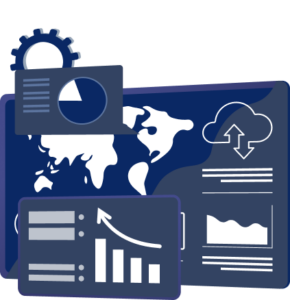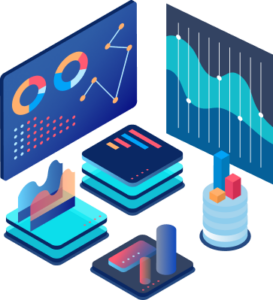-
Smart Meter Insights
Unlocks smart grid and AMI data and turns it into actionable insights for business operators.
The Role of Smart Meters in Modern Energy Systems
Smart meters have emerged as critical components in modern energy systems, marking a shift from traditional analog meters to advanced, digitally connected devices. These meters offer a transformative approach to how electricity, gas, and water utilities monitor and manage consumption...
Key Features
Billing insights refer to detailed analyses and breakdowns of energy consumption that help consumers better understand their energy usage and manage their utility costs. This empowers consumers to adjust their behavior and optimize their energy use for cost savings. Below are the key features of billing insights enabled by energy disaggregation :
- Appliance-Level Billing Breakdown
- Energy disaggregation allows users to see how much each individual appliance contributes to the total energy bill. For example, users can see how much they spend on heating, cooling, lighting, or running appliances like refrigerators, washing machines, or entertainment devices.
- This appliance-level insight helps users identify which devices are the most energy-intensive and adjust their usage patterns accordingly.
- Usage Trends Over Time
- Billing insights provide historical data on energy consumption, allowing users to track their usage and associated costs over time. Consumers can view trends on a daily, weekly, monthly, or even yearly basis.
- This helps users identify patterns, such as seasonal variations (higher energy use in summer for air conditioning) or increases in usage due to additional appliances.

Remote reading performance refers to the capabilities and efficiency of systems that collect, transmit, and analyze energy consumption data from smart meters or other monitoring devices without requiring manual meter readings. This technology plays a key role in modern energy management by allowing utility companies and consumers to access real-time data and make informed decisions based on accurate consumption patterns. Below are the key features of remote reading performance :
- Remote reading systems provide near real-time or continuous data collection from smart meters, allowing for precise tracking of energy usage as it happens. This enables timely decision-making for consumers and utilities, offering up-to-date information on consumption trends.
- Remote systems automatically collect meter data and transmit it to utility providers, eliminating the need for physical meter readings. This saves time, reduces labor costs, and minimizes errors associated with manual readings.
- Consumers can also benefit from this feature through real-time alerts or notifications from the utility provider.
- High-quality data transmission is critical for accurate billing and monitoring, helping avoid discrepancies in energy consumption reporting.
Daily read reliability refers to the consistency and accuracy of collecting energy consumption data from smart meters or monitoring devices on a daily basis. Ensuring reliable daily reads is critical for utilities to provide accurate billing, track consumption trends, and manage the energy grid efficiently. Below are the key features that contribute to daily read reliability :
- High Accuracy
- The system’s ability to capture and transmit accurate data is fundamental to reliable daily reads. This includes accurately reflecting the energy consumed and avoiding erroneous or estimated readings.
- High data accuracy minimizes billing disputes and allows consumers to track their exact usage, leading to better energy management.
- Reliable systems ensure that daily energy readings are transmitted with minimal delay, providing near real-time data for utility providers and consumers. Low latency in data transmission helps utilities respond quickly to energy demand changes and allows consumers to monitor their usage closely.
Big Data Processing Engine : Used to perform business validations and
transformations.
Widgets/Modules/Micro Services: Different modules of Impresa Insights can be deployed as individual micro services to perform different business processes such as Energy Disaggregation, DSM, Usage Insights, and so on.
Built-in Machine Learning Engine: This component is used to build and train machine learning models. It is used to build Energy Disaggregation, Bill forecasts, Neighborhood Comparison, etc.
Utility Centric Data Model: Stores structured and organized data in the form of facts and dimensions. These data elements will be used to show reports and analytics on dashboards.
Modular Design: Its modular design allows for effortless addition or removal of components, ensuring the integration of new features without disrupting current operations.
Integration Service: Impresa Insights has integration services deployed as a separate microservice which is used to communicate with external systems.
Event Driven Architecture: The adoption of an event-driven architecture ensures decoupled functionality, making adding new features as simple as introducing new event handlers.
Configuration-based: Configuration options allow administrators and/or end-users to enable or disable specific features through configuration files or settings.

Benefits

Actionable insights for Utilities
Actionable insights for utilities refer to the meaningful, data-driven information that helps utility companies improve their operations, optimize resource use, enhance customer experiences, and meet regulatory goals. With the growing adoption of smart technologies like advanced metering infrastructure (AMI), smart grids, and IoT sensors, utilities can collect vast amounts of data.
Explore data across our enterprise applications
Exploring data across enterprise applications refers to the process of integrating, accessing, and analyzing data from multiple systems and software solutions within an organization. Enterprise applications like ERP, CRM, HRMS, and other business platforms often store valuable, but siloed, data.


Historical data exploration capabilities
Historical data exploration capabilities refer to the ability of organizations to access, analyze, and derive insights from past data collected over a specific period. By exploring historical data, businesses can identify trends, patterns, and anomalies that help in forecasting, decision-making, and improving operations.
Take a product tour to discover the top reasons companies choose Smart Meter Insights
Learn more about AI in Smart Meter Insights
How Platform Can Revolutionize Customer Engagement In Utility Industry

Leveraging Smart Meter Insights for Utility Optimization and Enhanced Customer Service
Driving Operational Excellence and Customer Engagement with Advanced Metering Analytics...

Unlocking Actionable Data for Business Operators through Smart Grids and Advanced Metering Infrastructure
Empowering Electric Utility Companies with Real-Time Insights and Data Consolidation...
Smart Meter Insights Customer Successes
Customers in a wide variety of industries and regions use Impresa Smart Meter Insights to achieve their goals.

